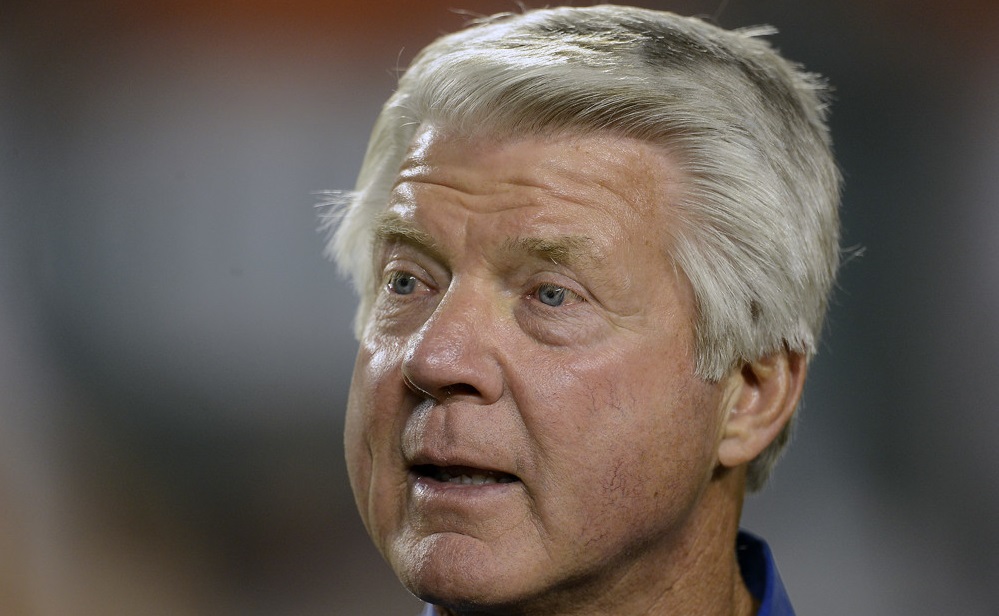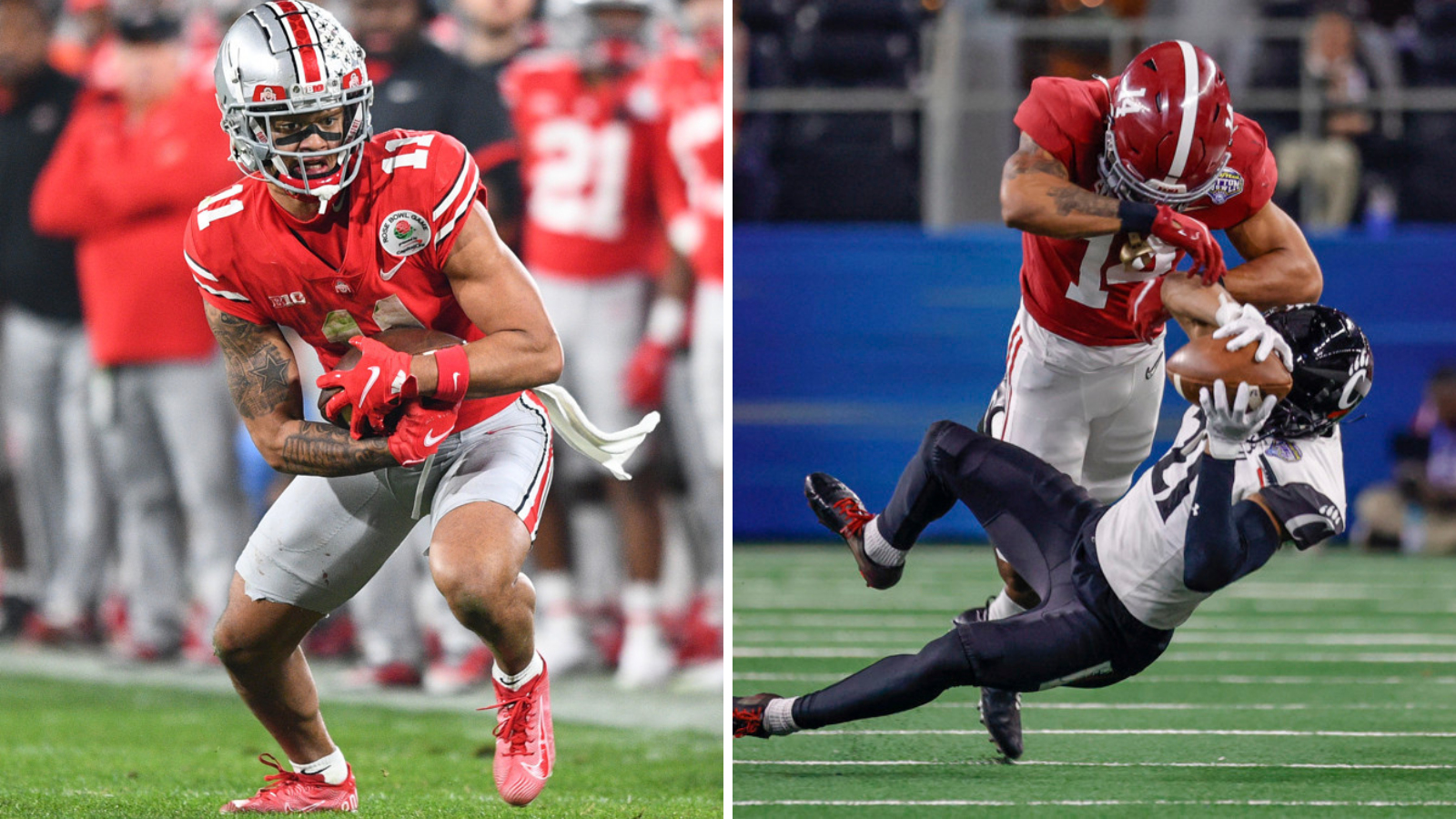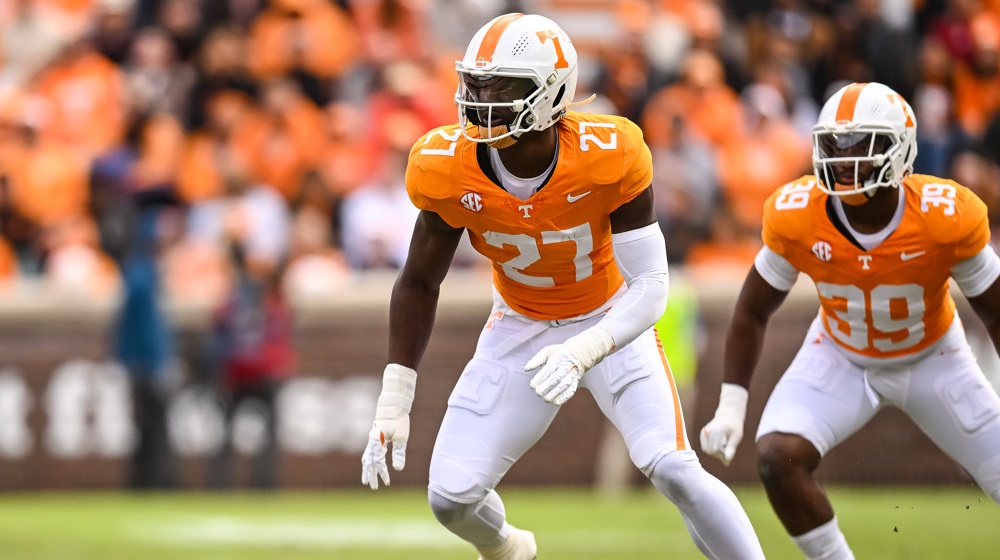If this year’s draft class formed its own league with just the current set of eligible players, the quarterbacks would be in trouble.
The 2022 class of edge rushers features seven edge rushers with at least a strong starting grade according to SIS scouts (6.7 or higher). That includes two players who are at the top of many draft boards, Aidan Hutchinson from Michigan and Kayvon Thibodeaux from Oregon.
In this article, we’ll explore more than just that elite pair, finding the big producers and hidden gems at the position from a statistical angle.
Much more than was the case in previous decades, edge rushers vary in terms of how often they rush from a two-point or three-point stance. (For those unfamiliar, the number of points is just the number of points of contact with the ground. Standing up is two-point, one hand on the ground three-point, two hands four-point.)
In general, edge rushers who stand up more often have better results rushing the passer. Those who play more often with their hand on the ground have better results defending the run. These aren’t large differences, but it’s something to keep in mind when looking at these prospects.
If we look at the last four years of drafts, nearly half of all edge prospects played from a three- or four-point stance at least two-thirds of the time over their careers. But if we look just at their platform season, that number is closer to 40 percent, showing a lean towards standing up to rush as their careers progress.
Of the top players on the board, there has been a shift over their careers. Both Hutchinson and Thibodeaux played from a down stance more than 75% of the time prior to this year, but they did so less than 20% of the time this year. South Carolina’s Kingsley Enagbare also transitioned towards stand-up rushing from a more mixed repertoire the previous two years, and his advanced pressure metrics jumped.
But I’m getting ahead of myself; let’s start with the basic pressure metrics.
Basic Pressure Rate
Getting into the quarterback’s face, even without getting home for a sack, is incredibly valuable. Pressured dropbacks in FBS games in 2021 resulted in an average loss of nearly half an Expected Point. Even if you exclude the sacks, the other types of pressure come with an average loss of a quarter of an Expected Point.
In terms of pure production on a rate basis, situational pass rushers lead the way. Among players SIS evaluated for this draft class, three players stand out in terms of the pressure they generated over their college careers, but they also rushed the passer more selectively.
Best Career Pressure Rate by Edge Rushers in 2022 NFL Draft
| Player | School | Rush% | Rush Snaps |
Pressure% |
| Nik Bonitto | Oklahoma | 63% | 517 | 23% |
| Adam Anderson | Georgia | 65% | 274 | 23% |
| Kayvon Thibodeaux | Oregon | 87% | 750 | 16% |
| Myjai Sanders | Cincinnati | 97% | 987 | 15% |
| George Karlaftis | Purdue | 99% | 787 | 15% |
Nik Bonitto was very productive as a pass rusher for an Oklahoma team that faces a lot of tough competition. He might not have the frame to be an every-down player at the NFL level, but he’s a disruptive force and was able to finish plays off with sacks as well.
While pressure production is the more important metric than sack production because it’s much more reliable year-over-year, we can still learn something from sacks—if nothing else, who had anomalous sack production relative to their pressure generation.
One example of this is Myjai Sanders from Cincinnati. Sanders is one of our top-graded edge rushers this year, and you can see his name on the Pressure Rate leaderboard above. Despite that, he got home for a sack just 1.4% of the time in his career. If his sack production followed the typical relationship with pressure generation, he’d have twice as many sacks.
Correcting Biases in Pressure Statistics
I mentioned before that situational pass rushers led the way in terms of Pressure Rate. This isn’t entirely surprising. The most obvious situational factor is the likelihood of the play being a pass, so if you’re disproportionately on the field on obvious passing downs, it stands to reason you’ll pin your ears back on the way to a higher pressure rate.
In a similar vein, a player can receive undue credit for hurrying the quarterback several seconds into a play after things have broken down. Or the offense could run a lot of quick passing concepts that take the pass rush out of the play, tempering the stats for the pass rushers.
To that end, SIS has three stats that better represent how a player generates pressure in a more consistent, neutral context.
True Pressure Rate
True Pressure Rate is relatively simple in concept. Many plays present either impossible or very awkward situations for a pass rusher to get after the quarterback, so True Pressure Rate evaluates pressure only on plays that did not feature a Run-Pass Option (RPO), play action, or a screen.
Because we’re mostly just trimming the fat in the sample of Pressure Rate, the True Pressure Rate leaders look pretty much like the Pressure Rate leaders, but with slightly higher rates on average.
If you find a player with a lower True Pressure Rate than Pressure Rate, that means that a disproportionate amount of their pressure came from non-traditional dropbacks.
Players who have a True Pressure Rate more than one or two percentage points higher than their Pressure Rate have done very well on traditional dropbacks, which is a more consistent sample of plays to evaluate. Texas A&M’s Tyree Johnson is an example on that side of things.
Quick Pressure Rate
SIS started tracking the timing of the first pressure on a play in 2020. This allows us to examine how quickly a play was disrupted.
In the case of pass rushers, we care about this for two reasons. Obviously, getting to the quarterback as soon as possible is the goal. The less opportunity for the offense to get itself set up, the better. But on the other side of things, pressure after the first few seconds of the play is as likely to be a result of other things going wrong than the pass rusher doing his job well.
So, we now calculate Quick Pressure Rate, which is the percentage of pass rush snaps in which the player generated pressure within the first 2.5 seconds. This 2.5 second threshold is consistent with our internal research on the inflection point at which the nature of pressure changes.
Career Quick Pressure% Leaders, 2022 Edge Rusher Prospects
| Player | School | Rush Snaps | Quick Pres% |
| Nik Bonitto | Oklahoma | 517 | 11% |
| Kayvon Thibodeaux | Oregon | 750 | 7% |
| Ali Fayad | Western Michigan | 1193 | 7% |
| Sam Williams | Ole Miss | 829 | 7% |
| Aidan Hutchinson | Michigan | 871 | 7% |
| Alex Wright | UAB | 557 | 7% |
This leaderboard has many of the same names on it, including Hicks and Bonitto remaining at the top by a significant margin. We do start to see the top prospects show their faces, however, with Thibodeaux and Hutchinson in the tier below.
Sam Williams should also be acknowledged here. He was in the top ten in FBS in total pressures this season playing against the best of the best in the SEC.
Pressure Rate +/-
Let’s get back to those situational factors mentioned above.
Think about the kinds of scenarios that might affect a pass rusher’s ability to get to the quarterback.
- How likely is the offense to be passing?
- Where are they lined up?
- What kind of drop is the quarterback taking?
All of these come into play in SIS’s Pressures Above Expectation metric. We take the factors above and create an expected pressure rate for each pass rush snap, and then compare that expected pressure rate to the actual pressure rate on those snaps. The result is Pressure% +/-.
Career Pressure% +/- Leaders, 2022 Edge Rusher Prospects
| Player | School | Rush Snaps | Pres% +/- |
| Aidan Hutchinson | Michigan | 871 | 7.0% |
| Nik Bonitto | Oklahoma | 517 | 6.8% |
| Adam Anderson | Georgia | 274 | 6.2% |
| Ali Fayad | Western Michigan | 1193 | 6.1% |
| Cameron Thomas | San Diego State | 1083 | 5.0% |
That’s more like it, Aidan Hutchinson!
The top pass rush prospect made hay relative to what his alignment and the game situation might have suggested. And he did so on many more pass rush snaps than the players around him on the leaderboard, which is more encouraging for his long-term outlook.
It’s not surprising to see the overall Pressure Rate leaders here as well because they were so far out in front. A couple more new names, Ali Fayad and Cameron Thomas, have differing projections according to our scouting staff. Fayad projects to be more backup-caliber, while the SIS staff expects Thomas to contend for a starting role.
For more on the NFL’s Pressures Above Expectation leaders in 2021, check out this article on Sharp Football Analysis.
Takeaways
The SIS NFL Draft site offers a bevy of metrics for all kinds of positions. For pass rushers, we really hone in on pressure stats, because they’re the driving force of value for those players. It’s encouraging as an analyst to see when the more advanced stats we create align better with scouting grades than the more basic ones (in this case Pressure Rate alone). Use the whole suite of stats to get the best picture of what a player does well relative to his peers.



